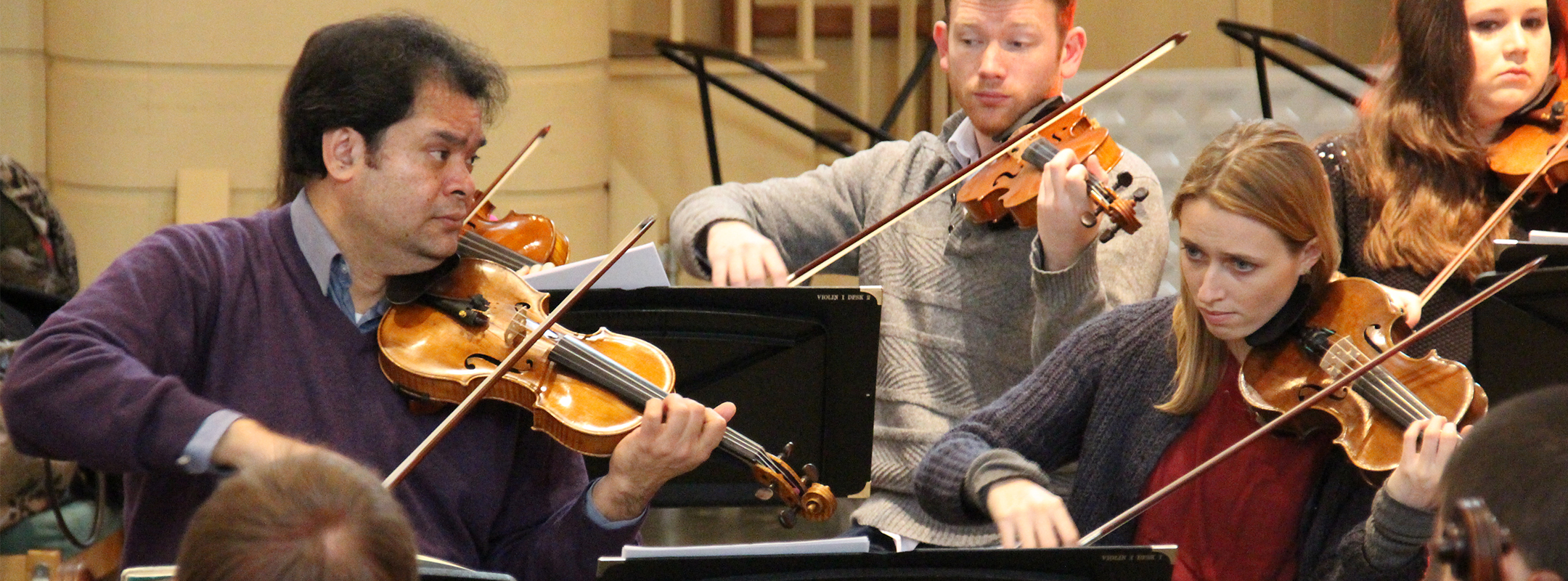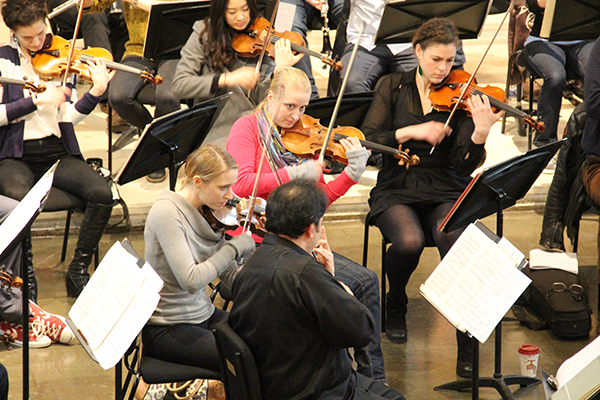
Violin
There aren’t many things more rewarding than the feeling you get when you walk off a concert stage after a soul-stirring, adrenalin-filled orchestral performance with your fellow colleagues. For each performance, musicians spend hours rehearsing together and perfecting every phrase to match the conductor’s musical intentions. But what happens when there is no conductor present? How will rehearsals run smoothly? How will musicians play in time with each other? Who will make all the viola jokes? The musicians of Southbank Sinfonia were given the inside scoop when a handful of artists from the Academy of St Martin in the Fields visited our base in Waterloo for an unforgettable week of mentorship.
Before this project, the Southbank Sinfonia 2015 group had always worked under a baton so to suddenly perform without one was going to be a challenge - especially given that the programme featured Prokofiev’s 'Classical’ Symphony. From day one, we were able to observe firsthand how a conductorless chamber orchestra works and receive invaluable advice from professionals in the field.
I was in the second violins for this project - to my right was Harvey de Souza, violist Bob Smissen was on the left, cellist John Heley further left and several wind/brass tutors in various sections of the orchestra, behind and in front. The thing that struck me the most was the openness of the ASMF musicians during rehearsals and their enthused musical discussions at every given opportunity. Whenever the music was silenced during rehearsals the mentors would, almost simultaneously, turn around to make suggestions to their respective sections and there were conversations bouncing between section leaders throughout the orchestra.
Playing piggy in the middle of it all, the rehearsal seemed a little on the chaotic side without a baton tapping on the music stand to quieten the orchestra down after a few minutes. However, I was pleasantly surprised when we started playing again. After these few chaotic minutes of chatter, the piece had somehow manifested itself into a tasteful fusion of musical ideas. Instead of starting with pre-conceived musical objectives, working on the Haydn and Prokofiev was a much more hands-on experience, beginning almost with a blank canvas and transforming, through mutual contribution, into a tapestry of colour and imagination.

In terms of musical development, the greatest challenge was to really hone our ensemble skills and work on our unanimity as an orchestra. With no conductor, it was difficult - especially given the challenges in the music and inevitable distance between the winds and strings. For us as an orchestra, this project was our first real test of trust and support we had for each other. But through this side-by-side experience with the ASMF, our confidence grew collectively and by the day of the concert it was exciting to see the music beginning to have an ebb and flow about it. At times there were elements of flexibility and spontaneity which really shone through, something that isn’t entirely possible with a conductor directing an orchestra. It was moments like these that made this orchestral setting feel almost chamber music-like, with a noticeably heightened sense of awareness all around.
With every note that was played during our week with the ASMF musicians we were taught to push boundaries, take risks and foster an outpouring of creative spirit, and it was a thrill to be able to share this wonderful experience of music-making with an audience of lovely Southbank supporters. I’m also happy to report that not having a conductor doesn't change the comedic status quo: viola jokes continued to provide vital comic relief in our rehearsals! (Sorry guys. We all love you, we really do.)
Find out more about Southbank Sinfonia's partnership with the Academy of St Martin in the Fields here.
Find out more about Yena here